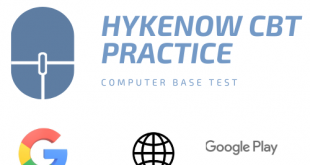What Do I Need to Start a Website?
So you’re considering building a website, but you’re new to this whole thing. You don’t even really know where to start. It can be easy to find yourself frozen before you get started if you don’t have a clear list of steps to guide you.
To help you out, here’s a step-by-step guide to what you need to start a website.
1. A Goal
If you’re at the stage of thinking about starting a website, you may already have a good start on this one (most people don’t start out wanting a website without having an idea of what it would be for). Nonetheless, before you go any further, really clarify for yourself what you want your website to accomplish.
If you’re starting a service-based business, the website should accurately communicate what you offer and why people should hire you. If you’re starting a product-based business, your goal is to get people to add those items to their shopping cart and check out. If you’re starting a blog to share your deep abiding love of spaghetti westerns, the goal could be as simple as finding a few like minds who enjoy reading your posts.
Whatever your particular goal, all the other steps laid out here can play a role in helping you achieve it, which makes it important that you figure this step out before going any further.
2. A Name
This deceptively simple step can be one of the hardest parts for many people. It doesn’t require a lot of tedious work, but it does require making a hard creative decision and it’s easy to get stuck at this step and have a hard time moving forward.
When buying a domain name for your website, you have to think about more than just what sounds good. Part of your brainstorming process should be to look up available domain names as you go. You don’t necessarily have to register the exact domain as the name you want your website to have, but it will make it much easier for repeat visitors to find you again if the names match, so it’s worth trying to come up with something original that you can grab the .com domain for without having to use weird spellings.
You will almost certainly find this step difficult, but don’t let it take you forever. Give yourself a deadline and get it done. Having a name that’s not 100% perfect is better than not having a name or website at all.
3. Web Hosting
You can usually register your domain name and buy web hosting in one fell swoop, since most hosting plans include at least one domain name as part of the package (and sometimes more). Picking the right hosting plan can be a bit overwhelming, but a little basic information on how types of web hosting differ should give you a pretty clear idea of what to go with.
If you’re just starting out and your website will be on the smaller side without a devoted following, an affordable shared plan will probably work just fine and you can get one for just a few bucks a month.
4. A Design
Every website you see on the web has a basic web design that someone had to create. When a website’s design is intuitive and doing its job, you don’t necessarily think much about it, but that’s because someone else did the thinking for you during the design process to make sure the site easily meets visitor needs.
You’ve got a few options to design your website. You can hire someone that’s experienced in web design to build you something unique that suits your needs. You can use a website builder to build it yourself using templates and an intuitive design interface. Or you can try to learn web design yourself and build a website from scratch. Be warned that the latter option won’t be easy if you don’t have prior experience (and really isn’t necessary in this era of easy-to-use website builders), but if web design is a skillset you’d like to have, building your first website is good practice.
5. Content
As with web design, you probably never put much thought into the work that goes into crafting all the words on the pages of websites you visit. But someone put that time and work in and it’s a step you have to take as well.
This is another step where it may be worth hiring a professional to help you out, especially if your website’s goal is to sell something. Professional website copywriters know how to develop positioning for businesses and figure out the language most likely to drive visitors to action. And if writing’s not your forte, you’ll probably spend lots of time and mental energy on worse results than if you hired someone who really knows what they’re doing.
If you decide to write the content yourself, take some time to read up on online copywriting best practices. Websites like Copyblogger and Copyhackers can provide some tips to help you learn the ropes.
6. Digital Marketing Plan
You may have thought creating your website was the hard part (and it’s not easy), but once your website launches you’ll quickly realize how hard it can be to get people to check it out. For that, you need online marketing.
Consider the types of online marketing tactics that make the most sense for your website and work up a plan to help raise awareness of your website and drive traffic your way. No one will buy your products or read your content without being able to find your website first. To achieve the goal you established in step one, you’ll need to commit to ongoing marketing efforts that bring your audience to you.
7. Google Analytics
One of the most valuable tools every website owner needs is conveniently entirely free. Setting up Google Analytics is easy and one of the first things you should do once your website is ready to launch. The tool provides rich insights into how many people are coming to your website, how they found you, whether they came back again, and who they are (demographically speaking).
The information you get from Google Analytics will tell you if your marketing is working and which tactics are working best. It will let you know which types of visitors are most likely to take action like a purchase or email signup, and which are most likely to leave the site within a few seconds without ever coming back. It will guide you in the types of changes you should make to your website and marketing efforts over time to better achieve your overarching goal.
Building a website comes with its challenges, but once you know the basic steps you need to take it’s easier to work out a plan to move forward. Once it’s up and running you’ll face a whole new set of challenges, of course, but it’s rewarding to see your traffic grow and your website take off. If you’ve been waiting to get started because you don’t know what to do, just take it one step at a time and get it done. Good luck!
 HYKENOW BLOG HYKENOW BLOG
HYKENOW BLOG HYKENOW BLOG


